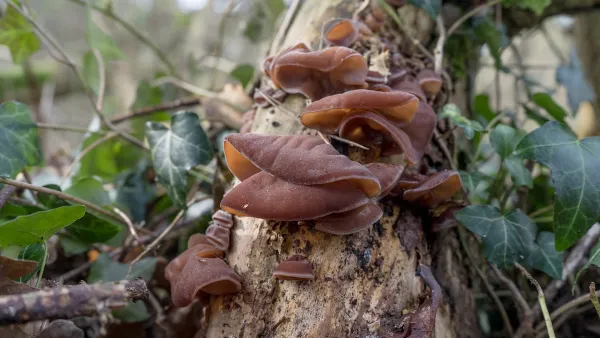With more than 11,000 acres of brownfield sites in New York City sitting underused due to contamination, officials there want to get things cleaned up and reused. Urban designer Kaja Kühl offers this field guide to small-scale bioremediation to help.
"In May of 2009, Mayor Bloomberg signed the New York City Brownfield and Community Revitalization Act, a milestone in the City's commitment to cleaning up brownfields for productive reuse in accordance with PlaNYC. Citing the scarcity of land in New York City and the anticipated influx of one million new residents by 2030, PlaNYC identified the importance of cleanup and redevelopment of properties that are abandoned and underutilized due to the presence or perceived presence of contamination. As part of this effort, the City has created the Office of Environmental Remediation, which oversees the environmental review of brownfield sites and offers assistance to property owners on the path to a Green Property Certification and potential redevelopment.
50% of all vacant properties in the city are smaller than 2,500sf and individually owned. 80% are smaller than 5,000sf. Remediation, typically in the form of excavation of the contaminated soil, is costly, despite programs, assistance and grants now available. As a result, these small properties lie vacant for years, underutilized and toxic, their value further diminished by the appearance of abandonment and potential contamination."
The guide offers tips on how property owners can use simple and natural methods to clean up their contaminated sites.
FULL STORY: From Brownfields to Greenfields: A Field Guide to Phytoremediation

Maui's Vacation Rental Debate Turns Ugly
Verbal attacks, misinformation campaigns and fistfights plague a high-stakes debate to convert thousands of vacation rentals into long-term housing.

Planetizen Federal Action Tracker
A weekly monitor of how Trump’s orders and actions are impacting planners and planning in America.

In Urban Planning, AI Prompting Could be the New Design Thinking
Creativity has long been key to great urban design. What if we see AI as our new creative partner?

King County Supportive Housing Program Offers Hope for Unhoused Residents
The county is taking a ‘Housing First’ approach that prioritizes getting people into housing, then offering wraparound supportive services.

Researchers Use AI to Get Clearer Picture of US Housing
Analysts are using artificial intelligence to supercharge their research by allowing them to comb through data faster. Though these AI tools can be error prone, they save time and housing researchers are optimistic about the future.

Making Shared Micromobility More Inclusive
Cities and shared mobility system operators can do more to include people with disabilities in planning and operations, per a new report.
Urban Design for Planners 1: Software Tools
This six-course series explores essential urban design concepts using open source software and equips planners with the tools they need to participate fully in the urban design process.
Planning for Universal Design
Learn the tools for implementing Universal Design in planning regulations.
planning NEXT
Appalachian Highlands Housing Partners
Mpact (founded as Rail~Volution)
City of Camden Redevelopment Agency
City of Astoria
City of Portland
City of Laramie




























